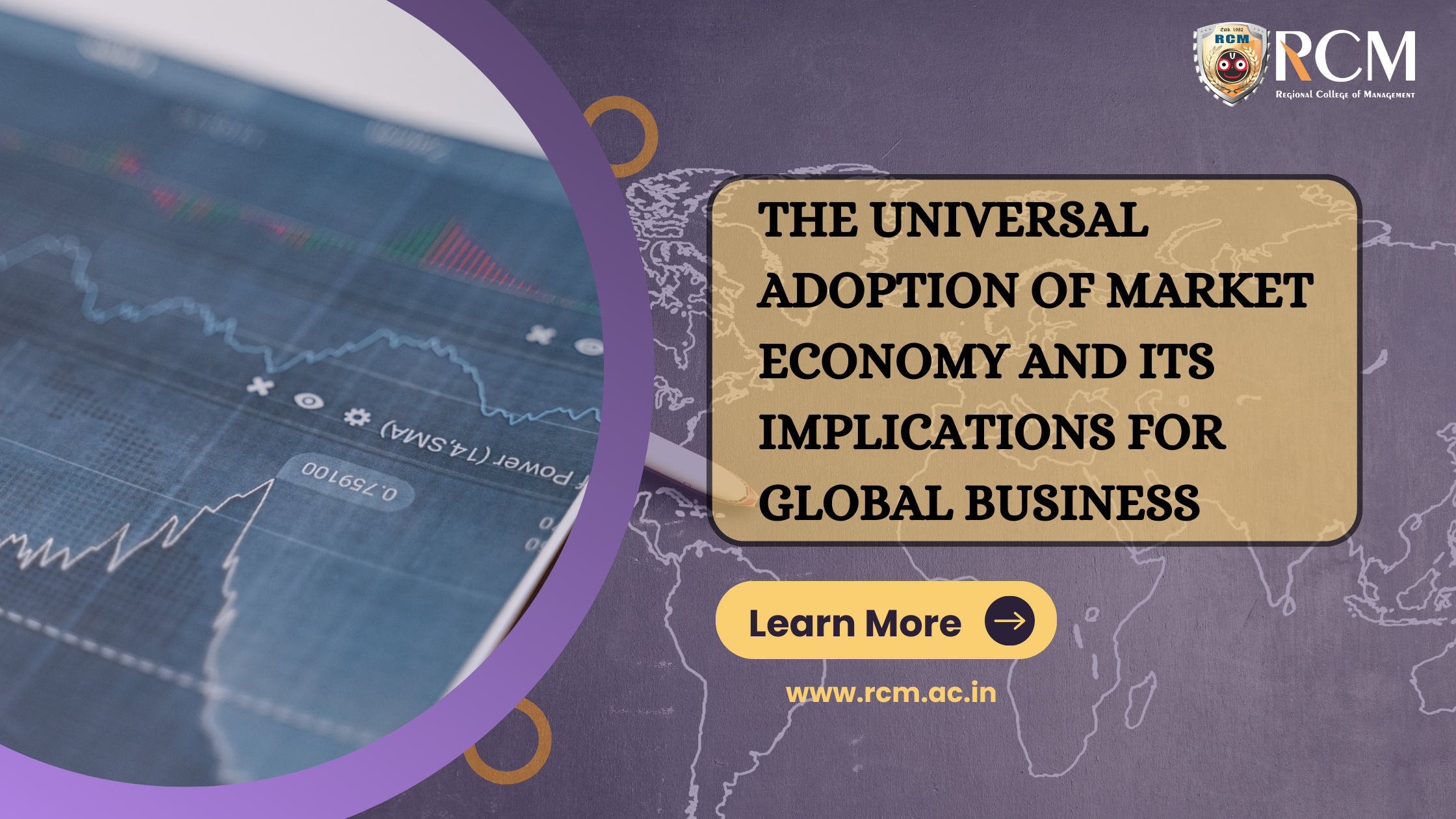Written by: Dr. Manas Ranjan Debata || Dean Academics
Introduction
The collapse of the Soviet Union and the end of the Cold War marked a significant shift in global economic systems. The universal adoption of market economies has created a truly global market, where countries buy and sell goods and services on a worldwide scale.
This article explores the key features of this global market and the adoption of global marketing strategies. It also examines the advantages and disadvantages that arise from this shift in the economic landscape.
The Global Market and Online Economy
The accelerated growth of the online economy has further intensified competition among businesses, forcing them to compete on a global level. The activity of buying or selling goods and services across all countries has become a salient feature of this global market. With the click of a button, consumers can access products and services from around the world, making it essential for businesses to adapt their marketing strategies to a global context.
Adoption of a Global Marketing Strategy
To succeed in the global market, businesses have embraced global marketing strategies. These strategies involve several key elements, including uniform brand names, identical packaging, similar products, synchronized pricing, standardized advertising, and coordinated product launches. By adopting these strategies, companies aim to create consistency, maximize efficiency, and enhance their brand image across different markets.
International Marketing
International marketing refers to the performance of business activities designed to plan, promote, and direct the flow of a company’s goods and services to consumers in more than one nation, with the ultimate goal of generating profit. This approach requires businesses to understand and adapt to diverse cultural, legal, and economic contexts, while also leveraging their core competencies.
Advantages of Global Marketing
The economy in sales and production
The global market allows companies to reach a larger customer base, increasing sales and production efficiency through economies of scale.
Lower marketing costs
Standardized marketing approaches across different markets can reduce marketing expenses and improve cost-effectiveness.
Consistency in brand image
Global marketing strategies ensure a consistent brand image, enhancing brand recognition and loyalty worldwide.
Ability to leverage ideas quickly
Access to a global market enables companies to quickly leverage successful ideas and best practices from different regions, fostering innovation.
Uniformity in marketing practices
Standardized marketing strategies streamline operations, improve efficiency, and facilitate easier implementation across multiple markets.
Access to foreign investment
The global market provides opportunities for businesses to attract foreign investment and expand their operations through an uninterrupted flow of capital.
Disadvantages of Global Marketing
impact on Domestic Workers
Consequently, increased global competition can lead to job losses among domestic workers, as companies often seek cost advantages by relocating operations to countries with lower labor costs.
Higher Expenses
Moreover, engaging in international marketing involves additional expenditures related to distribution, logistics, adapting to local markets, and complying with varying international regulations.
Challenges in Cultural Adaptation
Furthermore, businesses must understand and adjust to diverse cultural norms, consumer preferences, and local market dynamics, which can be complex and may increase operational costs.
Conclusion
The universal adoption of market economies and the emergence of a global market have significantly transformed the business landscape. The adoption of global marketing strategies has become essential for companies aiming to compete in this globalized environment.
While global marketing offers benefits like economies of scale, it also presents challenges such as job losses and rising expenses. Successful businesses understand global market dynamics and adapt to stay competitive in this interconnected world. They leverage core strengths and adjust strategies to meet evolving international demands effectively.




























